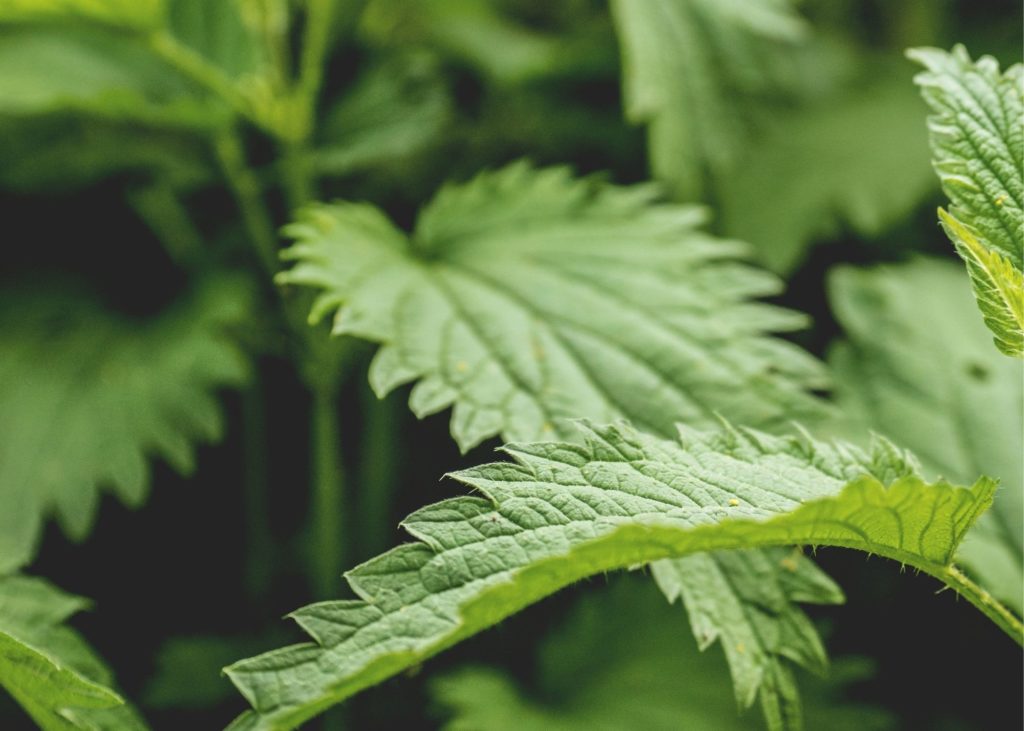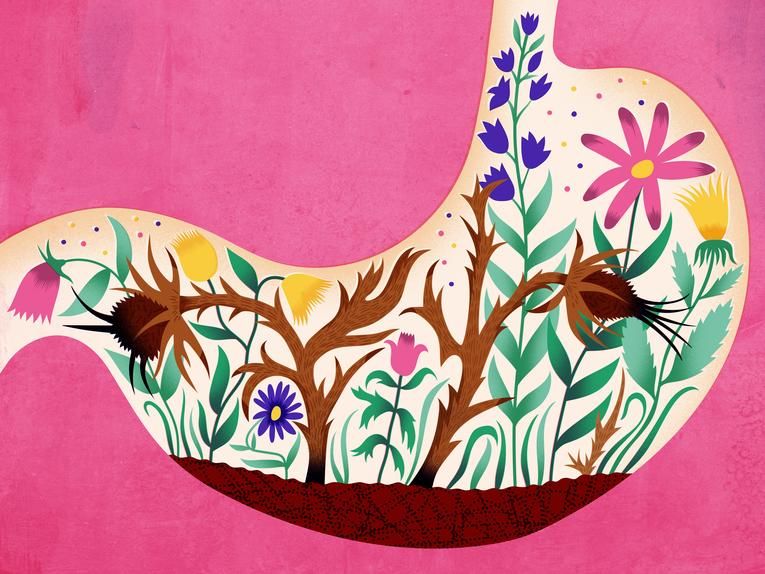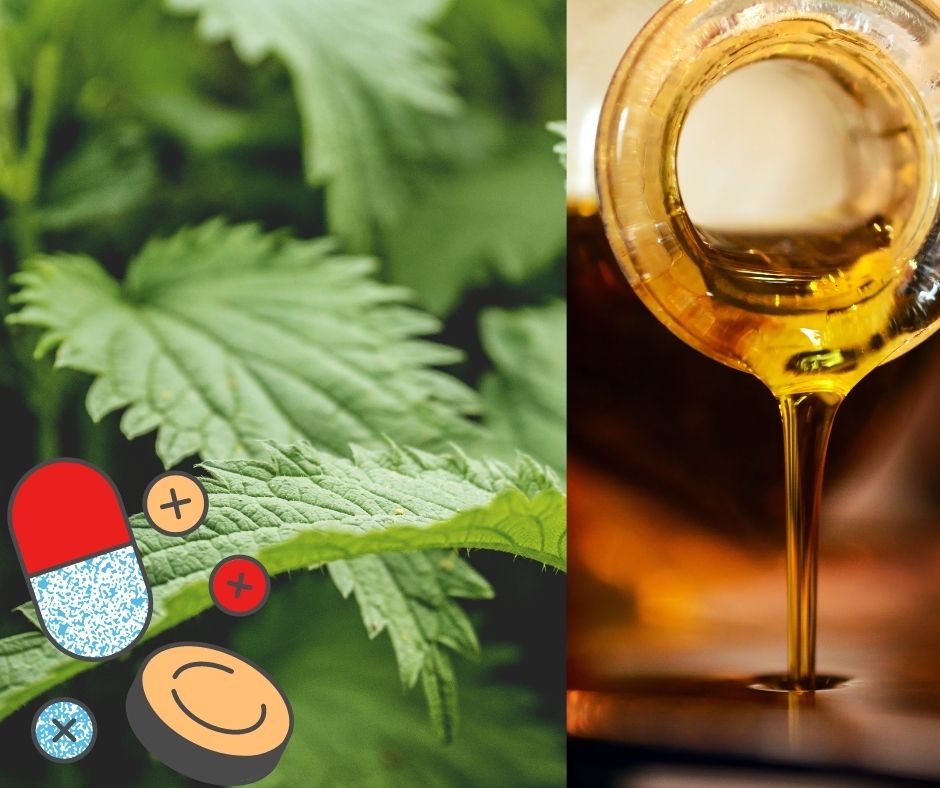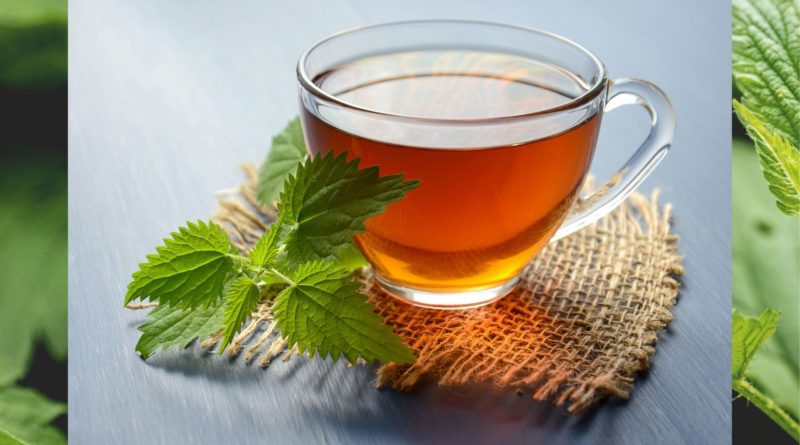Jiaogulan: A Potential Chinese Medicine Superstar?
Jiaogulan is a popular Chinese medicine that is traditionally used for various complaints, such as hepatitis, diabetes and cardiovascular disease. Considering the major costs these can have to health, longevity and quality of life, the therapeutic potential of this plant is worth exploring. Part of the appeal of plant-derived medicines and nutraceuticals such as jiaogulan lies in the fact that they are natural, and therefore can be perceived to be gentler and safer than synthetic drugs. This is not actually true- there are plenty of natural things that can be toxic and harm, even kill, you. So here, we examine this eastern medicine through the lens of western science, to see what the evidence says…
Key Points:
- Jiaogulan is a herb that has long been used in Chinese medicine for a variety of concerns that are common today. Western science is starting to explore its potential.
- Animal and cell-culture studies show that extracts or components of jiaogulan have antioxidant and anti-inflammatory potential; can improve a number of metabolic markers; may protect against some of the consequences of heart disease, liver disease and cancer; improve the gut microbiome; and reduce anxiety levels.
- The clinical trials investigating the real world effect on humans are quite limited in number and power. What we do have provides some support for its role in managing weight and body composition and as a potential complement to anti-cancer therapies. More clinical data is required before we can clearly and safely recommend jiaogulan for these or other purposes.
What is jiaogulan?
It is a herb that grows wildly in China and other parts of Asia. It’s commonly used in tea, but is also available as a supplement in drinks, other foods, and beauty products.

The whole plant is edible, although the leaves appear most commonly used.
Science has discovered 230 active compounds in jiaogulan. Approximately 189 of these are gypenosides (otherwise referred to as saponins). These may be responsible for a good deal of jiaogulan’s activity. There are also sterols, flavonoids, polysaccharides, vitamins and minerals, amino acids (18 in total, including 8 essential) and various vitamins and proteins, lutein, fatty acids including palmitic and linolenic acids, carotenoids, chlorophylls…and more.
Different parts of the plant (eg: leaf, stem, root) will have different relative amounts of these compounds. For example, it’s seeds are particularly rich in linolenic acids (an omega-3). In fact, linolenic acids comprise around 80% of all the fatty acids within the seeds. It also contains essential amino acids, squalene, tocopherol and phytosterols.
What are the potential benefits of jiaogulan?
Antioxidant and anti-inflammatory effects

As we know, inflammation and oxidative stress are associated with many disease states. Preliminary research hints that jiaogulan may be beneficial in this regard.
Anti-inflammatory effects have been observed in rats fed high-fat diets, where gypenosides inhibited atherosclerosis (plaque deposition on artery walls).
Animal studies have shown that components of jiaogulan have antioxidant potential. For example, extracts and gypenosides have been seen to reduce a harmful oxidation of LDL cholesterol and support the antioxidant capacity of heart muscle in a model of ischaemia-reperfusion injury (see more about this injury below). The oil has been seen to protect against oxidative stress and dull the impact of ageing among old mice. Meanwhile, in vitro studies have shown three isolated polysaccharides are also capable of antioxidant activity (scavenging free radicals and stabilising ions).
Further robust studies are needed.
Jiaogulan and metabolic health
A number of indicators of metabolic health seem to be improved, particularly with the use of jiaogulan extract or gypenosides on mice and rats (which form the basis of the bulk of studies). For example, we have seen:

- Reduced body weight
- In addition to the animal studies, a randomised controlled trial of 80 people who were obese but had no diagnosed disease showed 450 mg /day of actiponin, a heat-processed extract, reduced total abdominal fat, body weight, body fat mass, percent body fat, and BMI with no significant adverse events
- Reduced total cholesterol, triglycerides and LDL (bad) cholesterol
- Improved glucose tolerance, lower blood glucose
- In a mice model of type 2 diabetes, seed oil also improved glucose tolerance
- Less insulin resistance, improved insulin release into blood, increased numbers of insulin-secreting cells in the pancreas
- According to another mice study, combining white tea with jiaogulan may enhance the antidiabetic effects.
- More active fat cells (and Increased expression of genes involved in mitochondrial activity and fatty acid breakdown in both brown and white fat) and white adipose tissue browning
Such results were seen among animals in unhealthy conditions. For example, they were fed a high fat diet; diabetic; or were fed a normal diet but who had a genetic mutation that led to persistent hyperphagia, obesity, type 2 diabetes, dyslipidemia, and fatty liver. Whether jiaogulan has the same potential among healthy animals (let alone humans) is less well explored. It is interesting to note, however, that in one study 250mg/kg of extract of only improved glucose tolerance among obese rats, not lean ones.
Protective effects in heart disease

People who survive heart attacks often experience ischaemia-reperfusion injury. The injury occurs in tissues that have been deprived of sufficient blood for a period, and then the blood supply returns, causing . The In a rat study, rats who consumed gypenosides prior to being subjected to ischaemia-reperfusion injury fared better. Less heart tissue died, there were fewer pathologies in surviving heart muscle, and the left ventricle (i.e. chamber that pumps blood throughout the body) remained functional afterwards. The function and integrity of mitochondria within heart muscle cells were also preserved.
In another study, anaesthetised guinea pigs were subjected to medicinal interventions that would cause a temporary occlusion of an artery which supplies blood to the heart, arrhythmias, increased blood pressure and heart rate. In these situations, a jiaogulan leaf extract had a protective effect.
Jiaogulan and liver health

Non-alcoholic fatty liver disease (NAFLD) is a serious condition that interferes with other metabolic functions. Therefore it increases risk of diseases such as type 2 diabetes, cardiovascular disease, and chronic kidney disease. Furthermore, approximately 20% of people with NAFLD eventually get a form of hepatitis and even liver cancer. Considering an estimated that 25% of the worldwide population suffers from it- and its incidence of it has been on the rise- to say it’s a significant problem is an understatement. Thus we are in need of means to prevent and manage it.
In a mice model of NAFLD, jiaogulan extract reduced the weight, fat retention and inflammation of the liver. Meanwhile it provided a bunch of other associated metabolic benefits (eg: reduced body weight, greater insulin sensitivity, maintained cholesterol metabolism) and an improved intestinal microbiota. It is thought that the microbiota may alter the progression of NAFLD. We need more research to explore not only the effects of jiaogulan, but proposed mechanisms for these.
Animal models also show that gypenosides can protect the liver from ischaemia-reperfusion injury.
Anti-cancer effects

Jiaogulan extracts, fractions and pure compounds could potentially inhibit the proliferation of 30 different cancer cells (and have other anti-cancer effects)… seemingly without any negative effects on normal cells. Gypenosides and polysaccharide extracts have been seen to reduce the size of various tumours. However, the body of evidence has limitations. For example, it’s based mainly on animal and/or in vitro data. It is interesting to note that a 2016 review didn’t find any clinical trials on PubMed or Web of Science- the only trials found were on the China National Knowledge Infrastructure database. This is perhaps reflective of differing cultural priorities shaping what research is invested in.
The few clinical trials suggest that jiaogulan could potentially have curative effects. A trial of 59 patients with advanced malignant tumours and a 5-year observational study of multiple cancer types both showed that those who were treated with a jiaogulan formula had lower relapse and metastasis rates. In the 5-year observational study reduced mortality and improved immune function was also seen.
Immune function may be improved. For example, greater activity of Natural Killer cells has been seen in breast cancer patients. They do just what the name suggests- kill tumour cells. Jiaogulan has also been observed to improve the immune function in some lung cancer patients after chemotherapy.
In fact, jiaogulan may even be able to work in synergy with chemotherapy (as seen in one study of mid-late gastric cancer patients who displayed better quality of life and short-term curative rates).
The mechanisms for any anti-cancer effects are far from fully elucidated, however in vitro studies (and to a lesser extent animal and human studies) suggest cell cycle arrest, induction of programmed cell death, inhibition of invasion and metastasis, inhibition of cancer cells’ glucose metabolism, and the immunomodulating activities may play a part in different cancers.
Jiaogulan and the gut microbiome

Gypenoside is a prebiotic which has generally improved intestinal microbiota in mice/rat studies. In a 2019 study, they provided a positive shift in bacteria balance (more short-chain fatty acid˗producing bacteria and less sulfate-reducing bacteria). This was accompanied by a marked improvement to the inflamed gut barrier of mice that are genetically modified to be predisposed to benign intestinal tumours.
An improved diversity of microbes, and reduced ratio of Firmicutes to Bacteroidetes has also been seen both in normal animals and those with NAFLD fed a high fat diet. This is significant as a higher Firmicutes / Bacteroidetes ratio is correlated with obesity and other metabolic diseases. Bacteroides also help absorb and degrade host polysaccharides, to the benefit of the host.
Akkermansia muciniphila is a bacteria whose abundance is correlated with lower body weight and obesity in mice and humans. It tends to comprise 3-5% of the gut microbes in healthy people. It also degrades intestinal mucin (a component of mucus). When gypenosides were given to mice fed a high fat diet, it increased Akkermansia levels. However, in the study of mice with NAFLD, high-fat high-cholesterol diets increased Akkermansia levels greatly compared to normal diets, whereas the provision of glypenosides in combination with the high-fat high-cholesterol diet reversed much of this increase. It is possible the effect of gypenosides and diet on Akkermansia are modulated by pathophysiology or other variables. More research is needed in this area, particularly on humans.
Jiaogulan and anxiety
Animal models show anti-anxiety effects, improved dopamine and serotonin levels within brain, and a correction of increased corticosterone levels elicited by stress.
What type of jiaogulan product is best?

It’s hard to say. The existing research suggests there are some differences between different fractions/extracts/isolated compounds of jiaogulan. For example, in one animal study a leaf extract and two isolated gypenosides had similar protective effects on the heart. However, the extract had a longer lasting effect (when equal amounts of gypenosides were provided by the extract and isolated gypenosides). However we don’t have near enough data to base any recommendations on. There are also not as many studies into single isolated compounds as there are into extracts and gypenosides.
Unfortunately, there is also a lot of variability in the chemical composition of the jiaogulan fractions and extracts used in research. Different procedures are used to prepare the products. And a lot of studies haven’t even specified what their chemical components are (eg: the exact molecular structure of each, the number of different gypenosides in the mixture, the relative amounts of them, and their molecular structures). Standardisation would be valuable to advancing research, and, in turn, allow us to take a more targeted approach in matching products with their optimal uses.
The Verdict
According to the science, jiaogulan potentially has many health benefits such as those promoted by centuries of Chinese medicine. Unfortunately, the majority of evidence comes from animal and cell-culture studies, so we can’t be too confident in its practical applications for us humanoids. Let’s assume for a moment that in the future firm data will support its clinical use… Then we have another issue: research tends to administer high levels of jiaogulan-derived products. Whether comparative levels would be achievable for humans to achieve in a normal diet is doubtful. Concentrated supplements of jiaogulan extracts or specific compounds would likely be required- and we don’t know enough about the safety of this, either. Furthermore, the inconsistency in the research means we know little about the mechanisms of action or the relative value of different products. So, until these issues are resolved, the best I can say is adding an occasional jiaogulan tea or other jiaogulan-containing foodstuff to an otherwise varied and balanced diet would be the way to go… both for general health promotion and safety.
Have you tried jiaogulan? Let us know what you think!
References
Choi, H.S., Zhao, T.T., Shin, K.S., Kim, S.H., Hwang, B.Y., Lee, C.K., and Lee, M.K. (2013) Anxiolytic Effects of Herbal Ethanol Extract from Gynostemma pentaphyllum in Mice after Exposure to Chronic Stress. Molecules. 18:4342-4356. https://doi.org/10.3390/molecules18044342
Circosta, C., De Pasquale, R., and Occhiuto, F. (2005). Cardiovascular effects of the aqueous extract of Gynostemma pentaphyllum Makino. Phytomedicine.12(9):638-643. https://doi.org/10.1016/j.phymed.2004.06.023.
Gauhar, R., Hwang, S.L., Jeong, S.S. et al. (2012) Heat-processed Gynostemma pentaphyllum extract improves obesity in ob/ob mice by activating AMP-activated protein kinase. Biotechnol Lett. 34: 1607–1616. https://doi.org/10.1007/s10529-012-0944-1
Huang, X. Chen, W., Yan, C. et al. (2019). Gypenosides improve the intestinal microbiota of non-alcoholic fatty liver in mice and alleviate its progression. Biomedicine & Pharmacotherapy. 118:109258. https://doi.org/10.1016/j.biopha.2019.109258
Khan, I., Huang, G, Li, X-a, et al. (2019). Mushroom polysaccharides and jiaogulan saponins exert cancer preventive effects by shaping the gut microbiota and microenvironment in ApcMin/+ mice. Pharmacological Research. 148:104448. https://doi.org/10.1016/j.phrs.2019.104448.
Li, Y., Lin, W., Huang, J., et al. Anti-cancer effects of Gynostemma pentaphyllum (Thunb.) Makino (Jiaogulan). Chin Med 11, 43 (2016). https://doi.org/10.1186/s13020-016-0114-9
Liu, J., Li, Y., Yang, P., et al. (2017). Gypenosides Reduced the Risk of Overweight and Insulin Resistance in C57BL/6J Mice through Modulating Adipose Thermogenesis and Gut Microbiota. Agric. Food Chem. 65(42):9237–9246. https://doi.org/10.1021/acs.jafc.7b03382
Lokman, E.F., Gu, H.F., Mohamud, W.N.W., and Östenson, C-G. (2015). Evaluation of Antidiabetic Effects of the Traditional Medicinal Plant Gynostemma pentaphyllum and the Possible Mechanisms of Insulin Release. Evidence-Based Complementary and Alternative Medicine. vol. 2015, Article ID 120572, 7 pages https://doi.org/10.1155/2015/120572
Megalli, S., Davies, N.M., and Roufogalis, B.D. (2006). Anti-Hyperlipidemic and Hypoglycemic Effects of Gynostemma pentaphyllum in the Zucker Fatty Rat. J Pharm Pharmaceut Sci. 9 (3): 281-291.
Park, S.-H., Huh, T.-L., Kim, S.-Y., Oh, M.-R., Tirupathi Pichiah, P., Chae, S.-W. and Cha, Y.-S. (2014), Antiobesity effect of Gynostemma pentaphyllum extract (actiponin): A randomized, double-blind, placebo-controlled trial. Obesity. 22: 63-71. https://doi.org/10.1002/oby.20539
Quan, Y., and Qian, M.Z. (2010). Effect and mechanism of gypenoside on the inflammatory molecular expression in high-fat induced atherosclerosis rats. Chinese Journal of Integrated Traditional and Western Medicine. 30(4):403-406.
Wang, L., Pang, M., Wang, X., Wang, P., Xiao, Y. and Liu, Q. (2017), Characteristics, composition, and antioxidant activities in vitro and in vivo of Gynostemma pentaphyllum (Thunb.) Makino seed oil. J. Sci. Food Agric. 97: 2084-2093. https://doi.org/10.1002/jsfa.8013
Wang, M., Wang, F., Wang, Y., Ma, X., Zhao, M., and Zhao C (2013) Metabonomics Study of the Therapeutic Mechanism of Gynostemma pentaphyllum and Atorvastatin for Hyperlipidemia in Rats. PLoS ONE. 8(11): e78731. https://doi.org/10.1371/journal.pone.0078731
Xia, X., Xu, J., Wang, X., et al. (2020) Jiaogulan tea (Gpostemma pentaphyllum) potentiates the antidiabetic effect of white tea via the AMPK and PI3K pathways in C57BL/6 mice. Food Funct. 11(5):4339-4355. https://doi.org/10.1039/D0FO00395F
Yeo, J., Kang, Y-J., Jeon, S-M., et al. (2008) Potential Hypoglycemic Effect of an Ethanol Extract of Gynostemma pentaphyllum in C57BL/KsJ-db/db Mice. Journal of Medicinal Food. 11(4):709-716.
Yu, H., Guan, Q., Guo, L., et al. (2016) Gypenosides alleviate myocardial ischemia-reperfusion injury via attenuation of oxidative stress and preservation of mitochondrial function in rat heart. Cell Stress Chaperones. 21:429–37.
Zhang, M., Du, N., Wang, L., et al. (2017) . Conjugated fatty acid-rich oil from Gynostrmma pentaphyllum seed can ameliorate lipid and glucose metabolism in type 2 diabetes mellitus mice. Food Funct. 8:3696-3706. https://doi.org/10.1039/C7FO00712D
Zou, C., Shi, H., Liu, X., et al. (2016). Conjugated linolenic acids and nutraceutical components in Jiaogulan (Gynostemma pentaphyllum) seeds. LWT – Food Science and Technology. 68:111-118,
ISSN 0023-6438. https://doi.org/10.1016/j.lwt.2015.11.058
